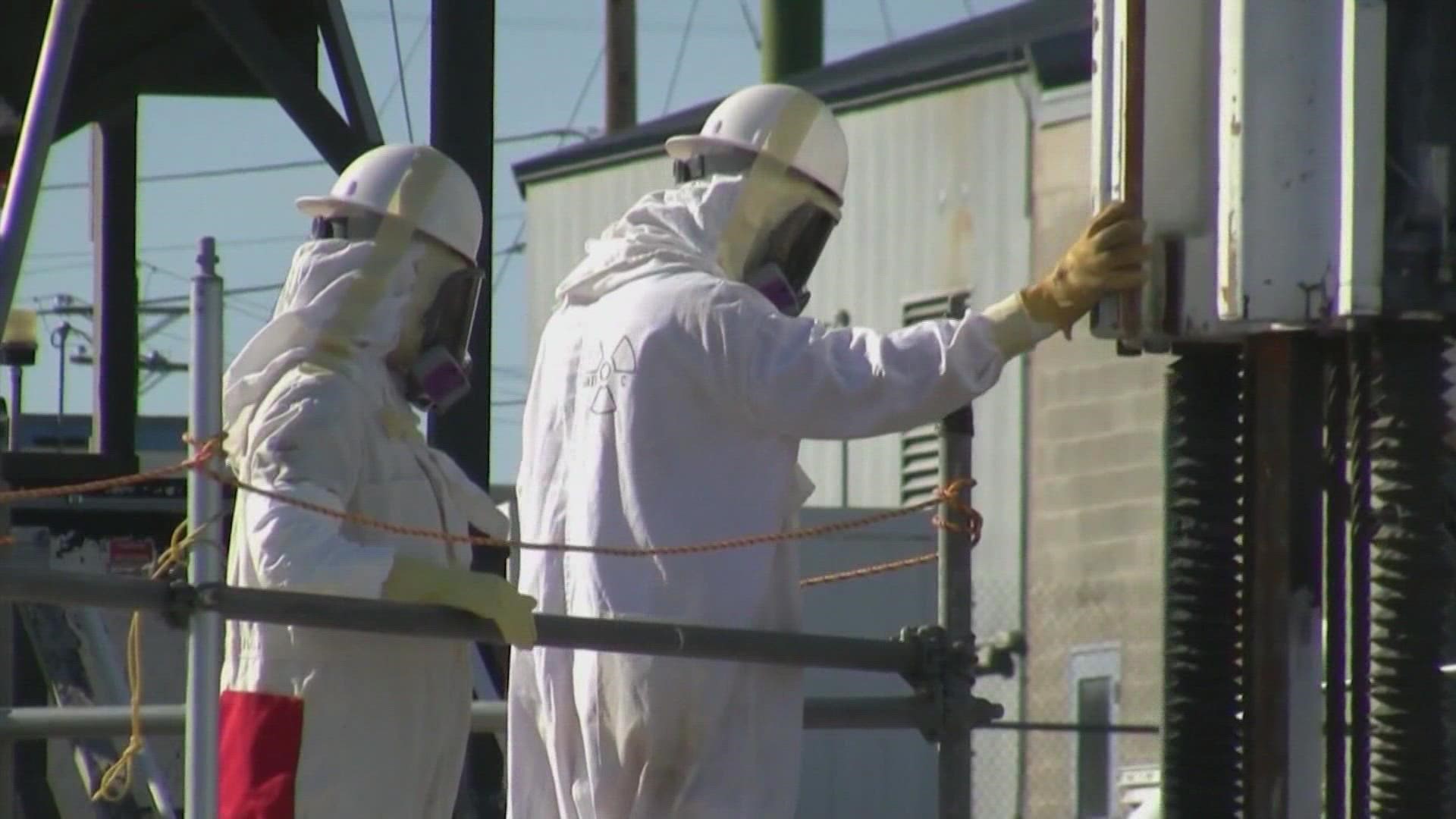RICHLAND, Wash. -- Workers have found more waste leaking between the walls of a nuclear storage tank on the Hanford Nuclear Reservation.
The waste was found in a new place between the walls of one of the 28 double shell tanks at the site. The US Dept. of Energy, which owns Hanford, says the waste is covering an area of 7 feet by 21 inches. The double shell tanks were built to be the most robust tanks at Hanford. They were constructed with the intent to be able to safely store the dangerous wastes until the technology to permanently dispose of the liquids is developed. A leak in a double shell tank is seen as one of the biggest setbacks to the cleanup program at Hanford in the last decade.
Workers tell KING they first saw signs of the new leak location on February 24 and confirmed it with a video inspection on March 3. This is the third identified leak location in the massive 1 million gallon underground storage tank known as AY-102.
This tank has been at the center of a KING 5 investigation launched last year. The investigators exposed the government contractor in charge of the tank, Washington River Protection Solutions (WRPS) -- ignored evidence of the leak for nearly a year before doing any serious investigating into it.
It s been nearly two-and-a-half years since recently retired WRPS worker, Mike Geffre, found the first signs of the leak in October, 2011. To date, there is no solid plan on how to mitigate the leak or pump the contents of the tank to a safer holding vessel. Geffre says the company is stalling.
Instead of being pro-active they become defensive. You need to handle everything as if it's real. You may respond to a few false alarms but that's the way it is. You cannot handle things, in the wait and see (mode). In the radiation world and the nuclear world that is extremely irresponsible, said Geffre.
The Washington State Dept. of Ecology, which is a regulator at Hanford, has given the US Dept. of Energy until Friday, March 7, to submit a revised pumping plan for AY-102. The plan originally submitted by the USDOE in June, 2013 was highly criticized by the Dept. of Ecology. A top Ecology official wrote a scathing letter to federal officials in January. We are deeply disappointed, wrote the state s Nuclear Waste Program director, Jane Hedges. You appear to have no plan and we cannot support merely waiting for conditions to worsen before taking action.
After the announcement of the newest leak identified in the tank, Dept. of Ecology Director Maia Bellon said this is further evidence that the contents of the tank must be emptied as soon as possible.
We believe the law is clear. We are anxiously awaiting tomorrow's new plan from the federal government to remove the waste. If it's not acceptable, Ecology will consider the need for further action, including possible enforcement. Based on information provided by the U.S. Department of Energy to date, there is no indication that waste from AY-102 has reached the environment. The state fully expects the federal government to provide all details about this leak as their investigation continues, wrote Bellon in a statement to KING 5.
But Hanford sources who have firsthand knowledge of Tank AY-102 say the USDOE has yet to finish the testing needed to prove the nuclear waste has not breached the outer containment of the tank. The leak detection system connected to the AY-102 has indicated the waste has entered the environment.
The Hanford Site produced plutonium for the US government from 1943 to 1989. The plutonium was used to fuel the nuclear bomb dropped on Nagasaki, Japan in 1945 and to build up the country's nuclear arsenal throughout the Cold War. Since 1989, the site has been a cleanup operation, only. The federal government spends more than $2 billion a year on the cleanup that is decades behind schedule and billions over budget.


